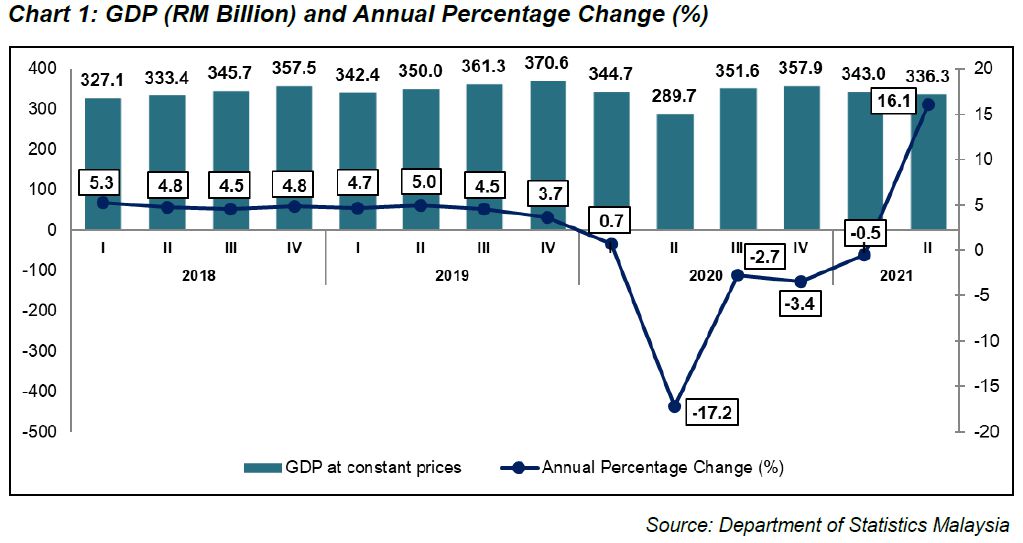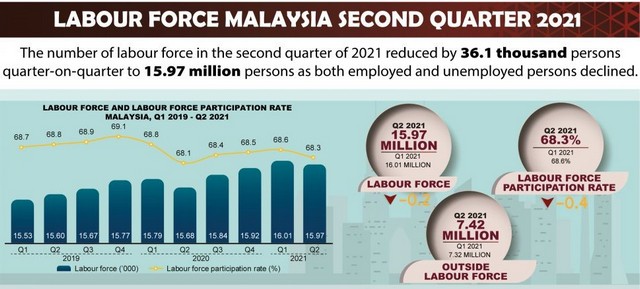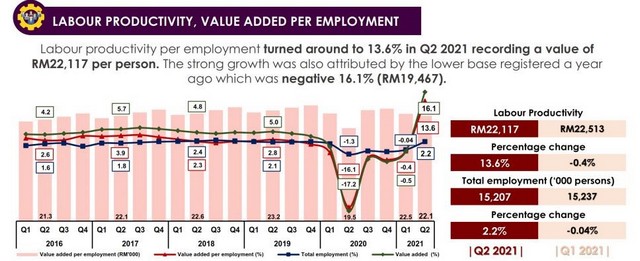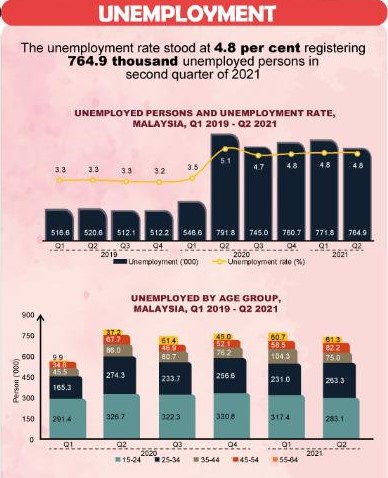The Post-COVID-19 Development Strategy (PCDS) 2030 that was launched by the Sarawak Government in July 2021 comes as Malaysia is reeling from the socio-economic impact of the COVID-19 pandemic since early last year.
The Department of Statistics Malaysia (DOSM) stated that 2020 saw Malaysia’s gross domestic product (GDP) contracted by 5.6 percent, the second lowest growth rate the country had experienced thus far; the lowest was at negative 7.4 percent back in 1998 during the Asian financial crisis.
With the decline in international trade activities and commodity prices, Malaysia’s exports of goods decreased to 1.1 percent, further compounded by disruptions to the global supply chain in the manufacturing sector as a result of closure of borders and factories worldwide.

The impact of COVID-19 also saw the country recording its lowest inflation rate at negative 1.2 percent that was heavily influenced by significant lower fuel prices following the ongoing oil crisis.
In terms of labour, Malaysia’s labour productivity based on value added per employment accounted for a decrease of 5.5 percent from a growth of 2.3 percent in 2019 with a value of RM89,022 per person.

Although the number of labour force in the country increased marginally by 0.6 percent to 15.7 million persons compared to 15.6 million in 2019, the unemployment rate rose by 1.2 percent to 4.5 percent in 2020.
Given the various stimulus and assistance packages introduced by the Federal Government, Bank Negara Malaysia projected that the Malaysian economy was expected to bounce back with a growth between 6.0 to 7.5 percent in 2021.
These estimates were in line with those of the World Economic Outlook released by the International Monetary Fund in April 2021 (6.5 percent), the Global Economic Prospects April 2021 by the World Bank (6.0 percent) and the Asian Development Bank (6.0 percent).
Economic Performance as of First Half of 2021
As of the first half of 2021, Malaysia’s economy grew by 7.1 percent, compared to negative 8.4 percent in the same period of 2020.
DOSM added that the national GDP in the second quarter of this year saw an increase of 16.1 percent after four consecutive quarters of contraction.
Specifically, while April and May recording GDP growth of 40.1 percent and 19.8 percent, respectively, the growth in June contracted by 4.4 percent due to the nationwide total lockdown, with tightened standard operating procedures enforced and essential services being only in operation.
Production-wise, the upwards economic performance in the second quarter of 2021 was aided by continuous growth in the manufacturing sector which recorded 26.6 percent (Q1 2021: 6.6 percent) and a rebound in the services sector that accounted for 13.4 percent (Q1 2021: -2.3 percent), while expansion in household consumption and positive growth in net exports and fixed assets investments contributed from the expenditure side.

Improvements can also be seen in the country’s labour productivity, in which expressed as the ratio of value added per employment increased by 13.6 percent at RM22,117 per person, compared to negative 0.4 percent in the previous quarter.
Despite that, the labour force in Malaysia dropped by 36.1 thousand persons to 15.97 million in the second quarter of 2021, following a rise in the third and fourth quarters of 2020 as well as the first quarter of this year.

Furthermore, the unemployment rate remained at 4.8 percent for the third consecutive quarter since the fourth quarter of 2021, recording a reduction by seven thousand to 764.9 thousand persons (Q1 2021: 771.8 thousand).

With ongoing provision of national stimulus and assistance packages and accelerated progress in inoculating citizens with COVID-19 vaccines, the Ministry of Finance Malaysia believed that the Malaysian economy will maintain its recovery progress albeit gradually.
The ministry added that improved external demand from key trading partners; recovery in commodity prices; and implementation of infrastructure projects with “high multiplier impact” would also drive the country’s economic recovery as Malaysia continues to weather through the risks and uncertainties posed by domestic and global factors brought about by the pandemic.






